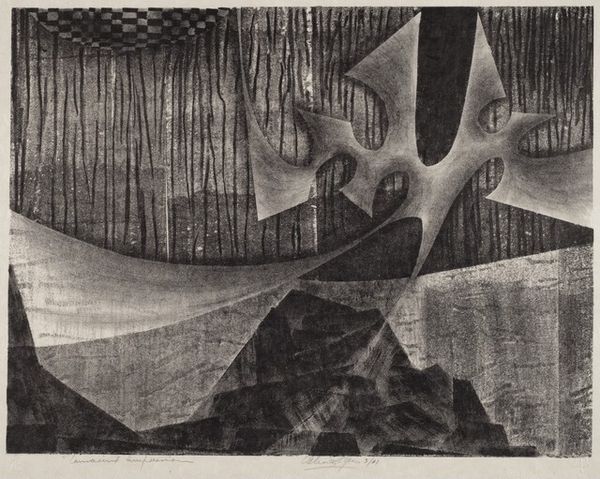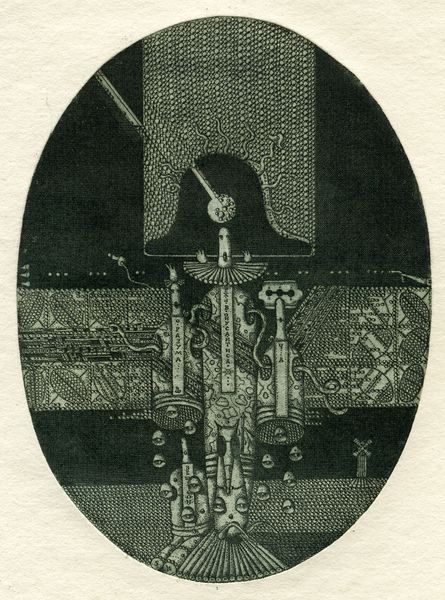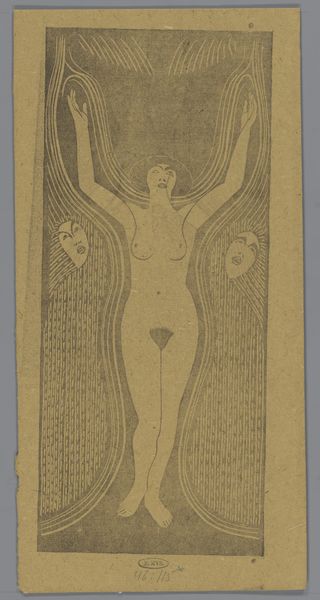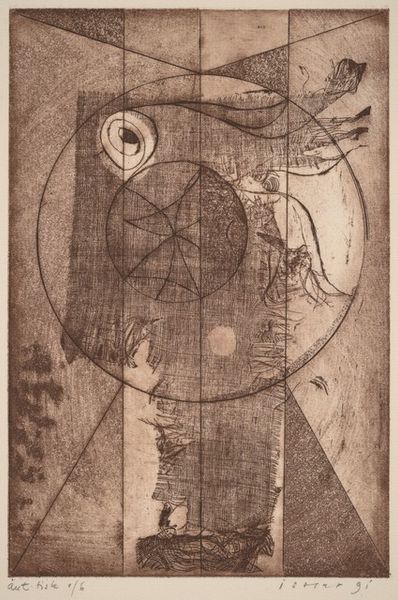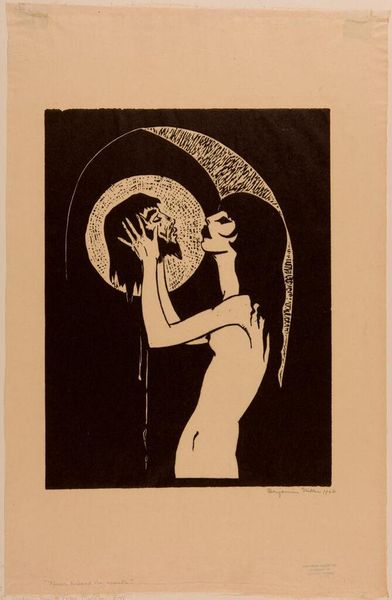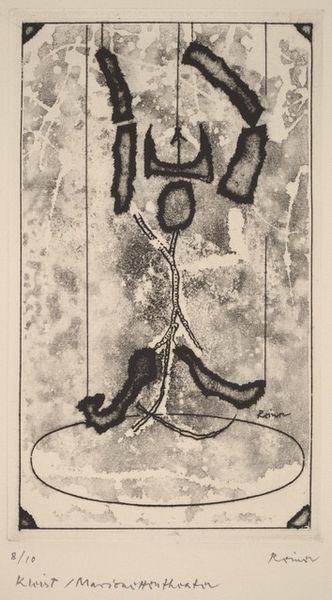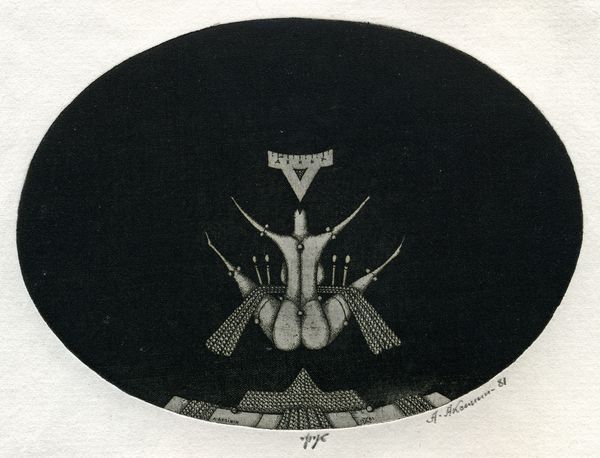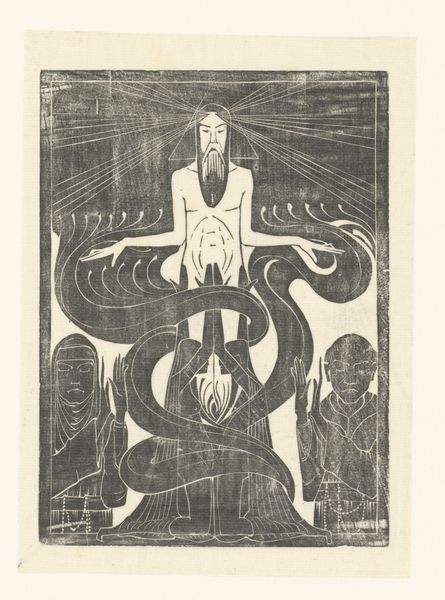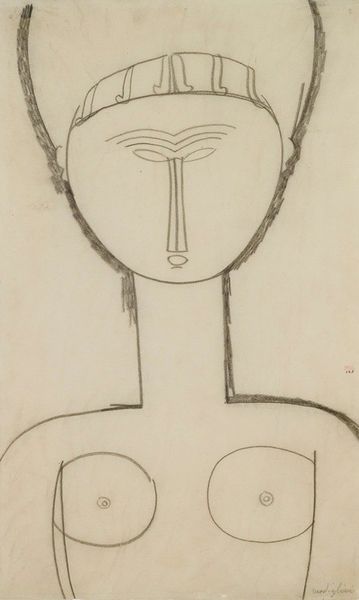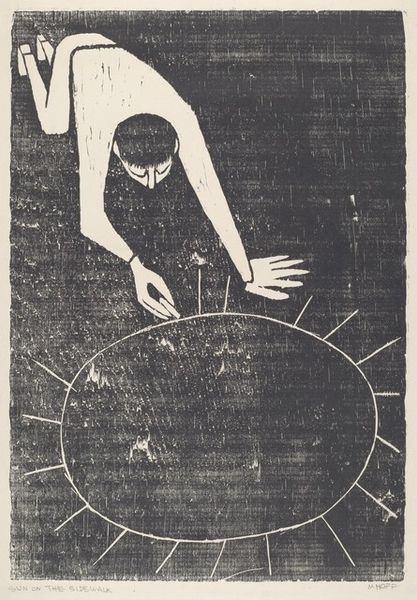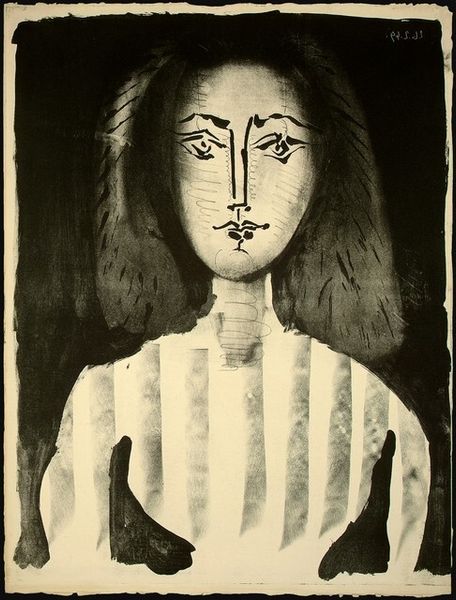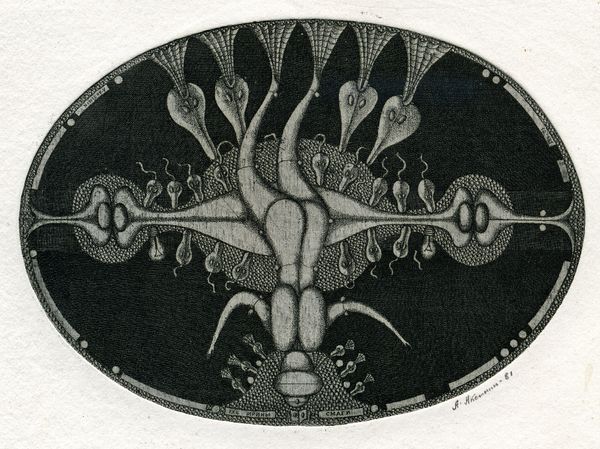
Illustration to Egyptian Book of the Dead (Le Livre Des Morts Des Anciens Egyptiens) 1948
0:00
0:00
Copyright: Anton Prinner,Fair Use
Curator: Let’s turn our attention to Anton Prinner’s “Illustration to Egyptian Book of the Dead,” created in 1948. It’s an etching, quite striking in its starkness. Editor: It feels immediately unsettling. The figure's multiple eyes and reaching arms create a sense of vulnerability but also omnipotence, doesn’t it? A silent plea reaching out from the past. Curator: Prinner's work often grapples with the weight of historical and cultural forces. This print particularly engages with colonial perspectives on ancient Egypt. Consider how Western artists appropriated and reinterpreted Egyptian symbolism, often filtering it through their own cultural biases. What narrative is being constructed, and whose voice is amplified, in this act of artistic translation? Editor: Visually, the repeating eyes draw me into a sense of inherited knowledge, as though I’m witnessing layered generations observing, witnessing events, bearing witness across time. Are we looking at ancestor worship perhaps, a continuum of spiritual awareness? Curator: The reference to the "Book of the Dead" provides a powerful framework for interpreting this. The texts themselves were meant to guide the deceased through the afterlife. Prinner's image taps into anxieties surrounding death, rebirth, and cultural memory, asking us to consider who controls the narratives around these crucial life cycle events. Is it about agency over one's destiny in the afterlife, but also one's identity in life? Editor: There's a certain stillness amidst the multitude of limbs, almost hieratic. Despite the potential for chaotic energy with so many elements, Prinner achieves a strange, compelling harmony. The gray scale enhances the solemn feeling as if time has rendered every element down to the simple shapes of life and death. Curator: Yes, and Prinner, himself a Jewish-Hungarian artist who later lived in France, fled persecution, no doubt adds layers of complexity. His interest in Egyptian funerary texts could represent his quest for historical refuge and a deep yearning for continuity, in the aftermath of immense disruption. Editor: This etching truly invites reflection upon ancient beliefs, while simultaneously prompting contemporary considerations regarding power and representation, wouldn't you agree? Curator: Indeed. I see Prinner as pushing us to interrogate whose stories get told and remembered, and under what terms, across generations and cultures.
Comments
No comments
Be the first to comment and join the conversation on the ultimate creative platform.
